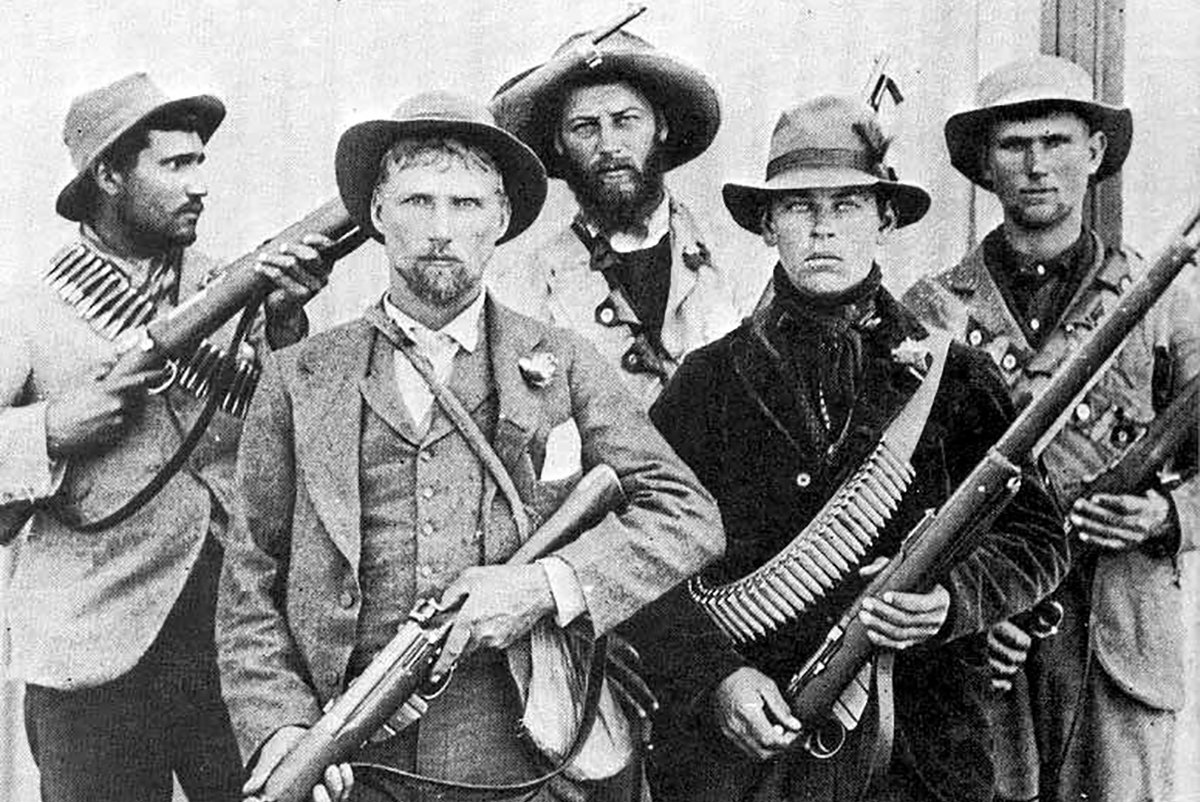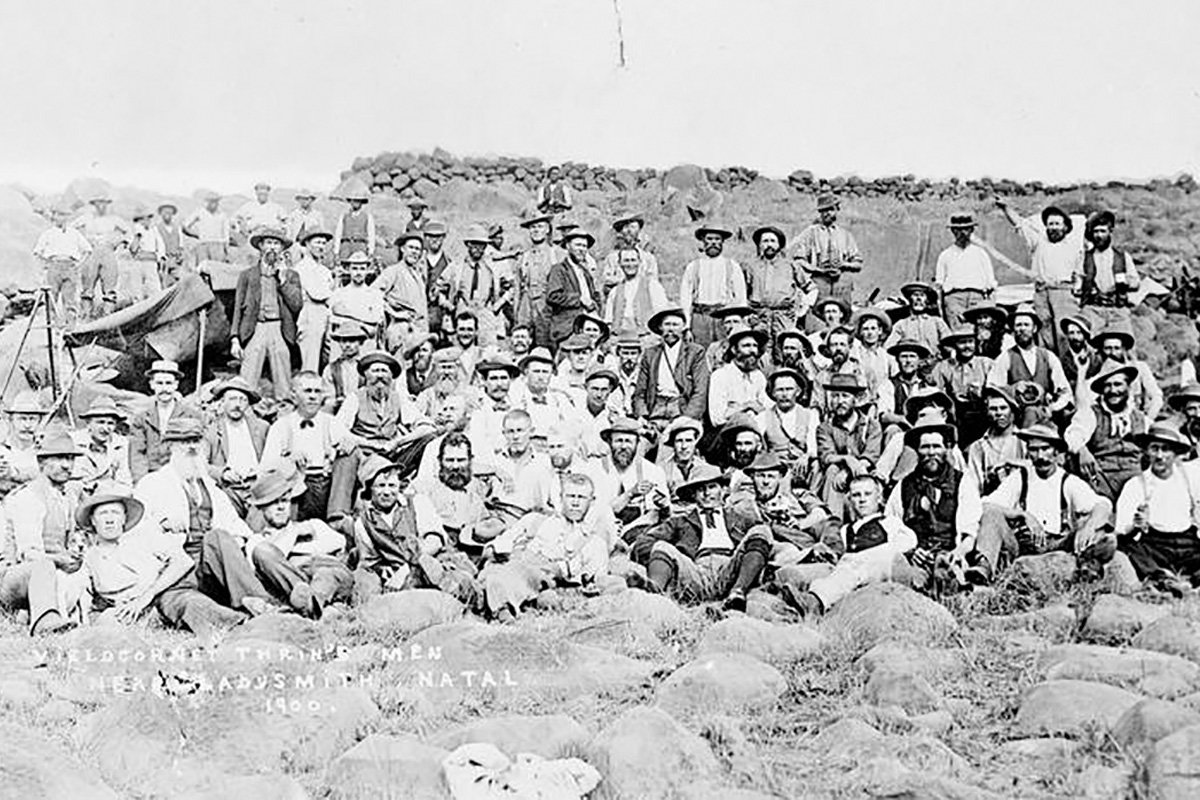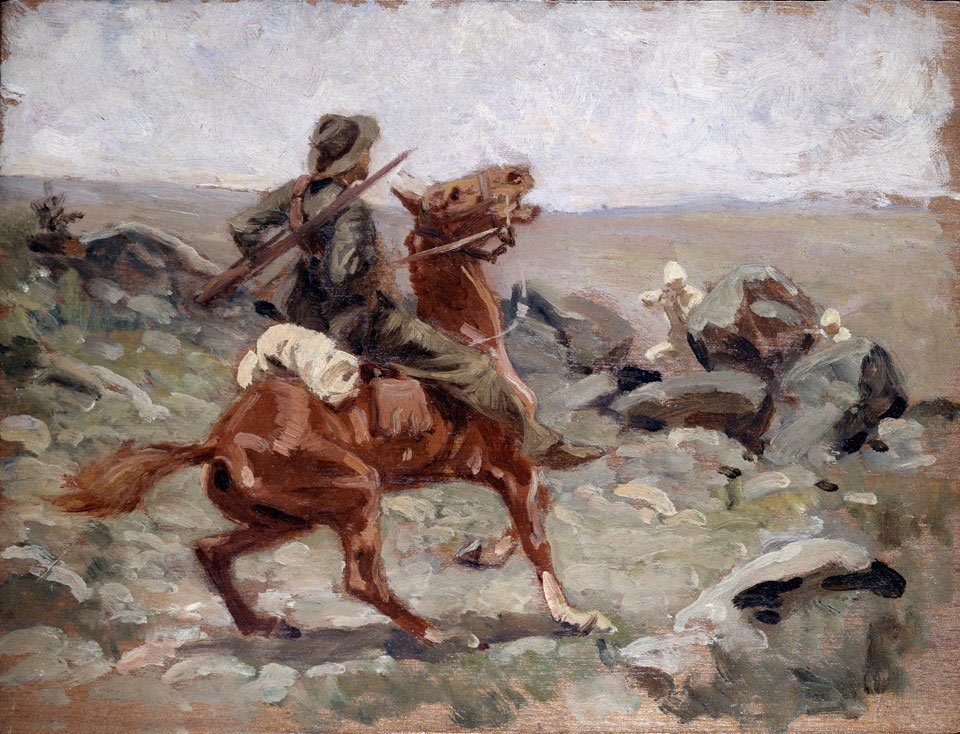Why Today’s Commandos Trace Their Lineage Back to South Africa’s Boer Wars

The Boer Kommandos traveled light, often by horseback, and wielded German rifles against British forces. Wikimedia Commons photo.
While Americans may be familiar with modern commando units, such as the Army Special Forces and Navy SEALs, most likely they don’t realize the term “commando” actually originated in South Africa during the Boer Wars.
The Boer Wars — the First Boer War (1880-1881) and Second Boer War (1899-1902) — resulted from diminishing relations between the Boer South African Republic and the British Empire. When the British seized the Dutch Cape Colony during the Napoleonic Wars in 1806, the action created an irreparable rift between the two sides. In the 1830s and 1840s, some 15,000 Boers began the so-called “Great Trek” from Cape Colony across the Orange River to form two independent Boer republics called the Orange Free State and the South African Republic, sometimes called the Transvaal Republic. When the wars kicked off, and in the face of a numerically superior British force, the Boers enacted an unconventional fighting style that led to the world’s first commandos.
Coffee or Die Magazine reached out to Alex West, a former Navy SEAL who spent some of his childhood years in South Africa, to find out more about the origins of the term “commando.”

“Kommando, or the way the Afrikaners spelled it, is Dutch,” West said. “They were these hit-and-run type guys — think of the American Revolution and Roger’s Rangers. These guys were hunters and trappers and were really good marksmen. Very similar to the Kommandos.” The singular “Kommando” referred to a unit of those guerrilla warriors.
These attack-and-flee tactics proved to be effective against the largely conventional strategies employed by the British Empire. Columns of marching British soldiers were regularly surprised by Boer Kommandos on horseback.
“The big thing with the Kommandos is they were an all-volunteer force because Afrikaners were farmers and didn’t have a professional military force,” West said.

Since the Kommandos were rural people, they were loosely organized, didn’t wear uniforms, and typically engaged in battles near where they lived.
In addition to the heavy Dutch presence in South Africa, the 88,000-strong Boer army used advanced rifles purchased from the German company Deutsche Waffen- und Munitionsfabriken during the Second Boer War. Armed with some 55,000 German Mauser M1896 7.92mm bolt-action rifles, the Boers picked off advancing British soldiers with ease.
“They would do a lot of small-unit things and just chip away at these big columns of British,” West said. “It was very difficult for the British to handle Kommandos traveling light on horseback. It was like death by a 1,000 cuts.”

Gen. Louis Botha, who assumed command of all Boer forces in 1900, understood how effective sabotage could alter the conflict from his experience in sabotage during the First Boer War. On one occasion in 1880, he overheard British spies were crossing into the Transvaal via rowboats belonging to nearby farmers. Botha reportedly snipped the lines tying every boat and pontoon near the shoreline, effectively preventing the British from crossing the river. When he reached a position of authority during the Second Boer War, he ordered similar tactics, leading raids against British railway supply lines.
The Boer Kommandos may have traveled light, but they also remained self-sufficient.
West remembers one history lesson he learned while helping his dad hang pieces of dried meat from their ceiling.
“Biltong is a beef jerky that is found in South Africa,” West said on the Late Night History podcast. “They [Boer Kommandos] would take strips of meat and put them on their horse’s neck while traveling around doing guerrilla warfare. The sweat from the horses would get into the meat and help dry and preserve it under the African sun.”

As is evidenced by the diary of a British Army schoolmaster named W.H. Gilbert, the British weren’t as resourceful,
“Our provisions are getting very scarce […] coffee, tobacco, jam, pickles and other necessaries,” Dec. 19-22, 1899, entries from Gilbert’s diary read. “I don’t think I will ever again grumble at dry bread for tea, or complain if there’s no milk in the jug […] The Boers are beginning to use their guns properly. This morning at 7 while some men of the Gloucestershire Regiment were eating breakfast, a shell burst on one of the sangars with terrible results, killing 7 men and wounding 10 others […] it broke right in amongst them. All this afternoon shrapnel shells were flying.'”
Although the Boers ultimately lost the Second Boer War against the British Empire, the Kommandos’ legacy lives on through all special operations forces around the world who proudly claim the title “commando.”
Read Next:

Matt Fratus is a history staff writer for Coffee or Die. He prides himself on uncovering the most fascinating tales of history by sharing them through any means of engaging storytelling. He writes for his micro-blog @LateNightHistory on Instagram, where he shares the story behind the image. He is also the host of the Late Night History podcast. When not writing about history, Matt enjoys volunteering for One More Wave and rooting for Boston sports teams.
BRCC and Bad Moon Print Press team up for an exclusive, limited-edition T-shirt design!
BRCC partners with Team Room Design for an exclusive T-shirt release!
Thirty Seconds Out has partnered with BRCC for an exclusive shirt design invoking the God of Winter.
Lucas O'Hara of Grizzly Forge has teamed up with BRCC for a badass, exclusive Shirt Club T-shirt design featuring his most popular knife and tiomahawk.
Coffee or Die sits down with one of the graphic designers behind Black Rifle Coffee's signature look and vibe.
Biden will award the Medal of Honor to a Vietnam War Army helicopter pilot who risked his life to save a reconnaissance team from almost certain death.
Ever wonder how much Jack Mandaville would f*ck sh*t up if he went back in time? The American Revolution didn't even see him coming.
A nearly 200-year-old West Point time capsule that at first appeared to yield little more than dust contains hidden treasure, the US Military Academy said.












